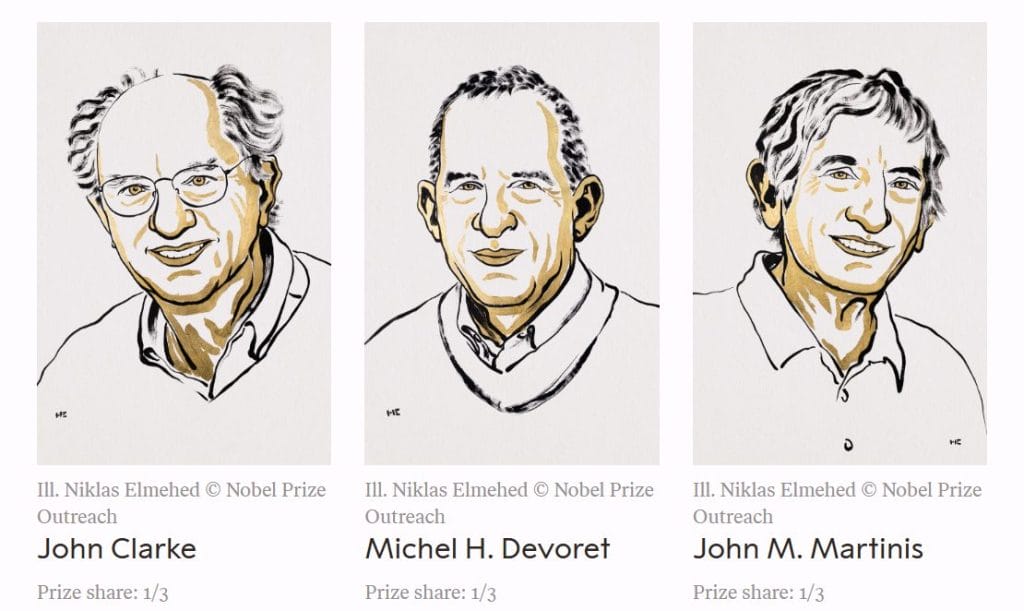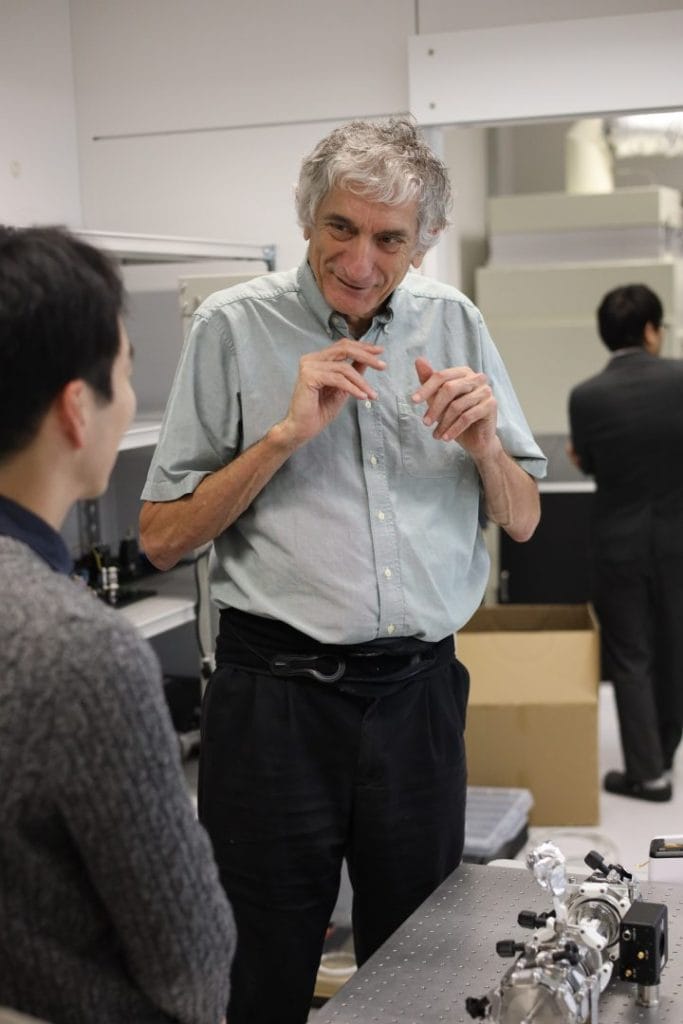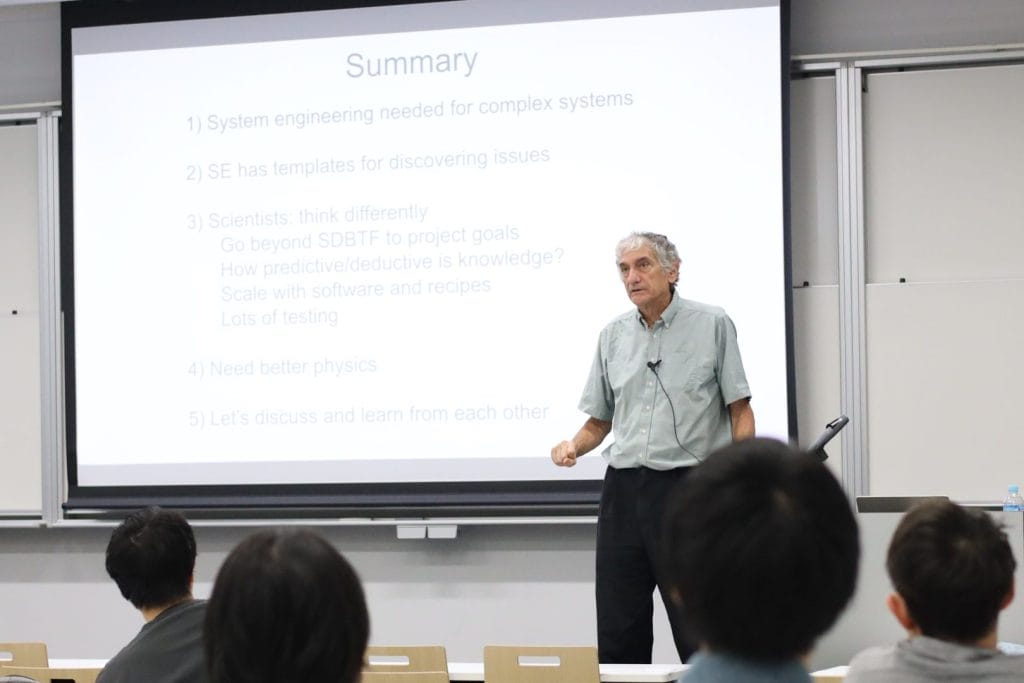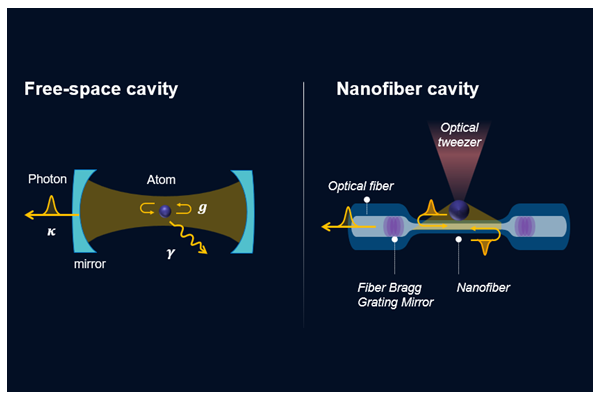Nobel Prize in Physics 2025

John Clarke, Michel H. Devoret, and John M. Martinis have been awarded the 2025 Nobel Prize in Physics “for the discovery of macroscopic quantum mechanical tunnelling and energy quantisation in an electric circuit.” What they proved at Berkeley in the mid 80s is now woven into the foundation of today’s quantum technologies: a superconducting circuit can behave as a single quantum object, tunnel through an energy barrier, and occupy discrete energy levels like an atom. See the nice review from Nobel prize for physics (popular summary & scientific background)
We are especially proud that John M. Martinis is a systems engineering advisor at NanoQT; his path from those Berkeley experiments to system-level quantum engineering continues to inform how practical quantum computers and related devices are built.

John Martinis discusses nanofiber cavity design with CTO Akihisa Goban during his visit to our lab.

John Martinis giving seminar at NanoQT, sharing insights from his decades of research
What They Showed and Why It Mattered
In a current-biased Josephson junction, the superconducting phase can be modelled as a particle moving in a tilted washboard potential. Classically, below the critical current the phase should remain trapped in a valley with zero voltage. The Berkeley team asked whether this collective, macroscopic degree of freedom could nonetheless tunnel out. They constructed an exceptionally quiet apparatus, suppressing stray microwave noise by more than 200 dB with custom filters, and introduced a weak microwave drive at the circuit’s plasma resonance to determine its parameters in situ. Under these conditions they observed a low-temperature saturation of escape rates consistent with quantum tunnelling rather than thermal activation. By sweeping the bias while applying microwaves, they further identified discrete excitations—first, second, and third levels—with spacings and transition rates aligned with quantum predictions. The conclusion was clear: macroscopic quantum behaviour can persist in superconducting circuits when the environment is properly engineered, turning the Josephson junction into an artificial atom and laying a foundation for circuit QED and modern superconducting qubits.
From “macroscopic nucleus with wires” to Today’s Quantum Computers
The Nobel background’s phrase “macroscopic nuclei with wires” became more than a metaphor in the 2000s and 2010s. Once a circuit could be prepared, driven, and read out without erasing its quantum character, it was natural to couple these artificial atoms to resonators and to refine readout so that information could be extracted gently. Design advances then favoured operating points that suppressed sensitivity to charge fluctuations and extended coherence, producing devices that became the workhorses of superconducting quantum computing. With those ingredients in place, error-correction-ready layouts aligned with lithographic and cryogenic constraints, emphasizing uniform arrays, local interactions, and high-fidelity measurement. System-level demonstrations, including Google’s Sycamore, built on this base by developing calibration protocols and control stacks that would have been inconceivable without the Berkeley proof that the junction phase is a bona fide quantum coordinate.
From Principle to Practice: Implications for Quantum Physics and Engineering Today
The award recognizes not only a beginning but also an engineering doctrine that remains current. Control of the electromagnetic and thermal environment is essential; without it, measurements reflect wiring and fixtures rather than the device itself. Architectures should be conceived for scale, applying the same discipline that revealed clean Hamiltonians and calibrated dissipation to push fidelities, suppress leakage, and integrate large numbers of controls.
At NanoQT we apply the same ethos to atom–photon interconnects and their integration to the quantum processing units because scalable quantum technology begins with doing both physics and engineering correctly. Interacting with John Martinis as a system-engineering advisor, we see that focus in every discussion: uncompromising rigor, relentless attention to the limiting mechanisms, and a commitment to understand the system as it is now, not as we wish it to be. From a system-engineering perspective, he always emphasizes that the priority is to locate and relieve the bottleneck rather than to celebrate the nominal advantages of the design. That perspective—curious, exacting, and anchored in technical details—turns sound physical principles into reliable quantum systems by addressing the true limiting factors first.
Concluding Remark
Congratulations to John Clarke, Michel H. Devoret, and John M. Martinis. Their experiments closed a long-standing debate and opened a pathway the field continues to follow, from the first undebatable signatures of macroscopic quantum behaviour in an electrical circuit to the programmable quantum processors operating in laboratories today.
